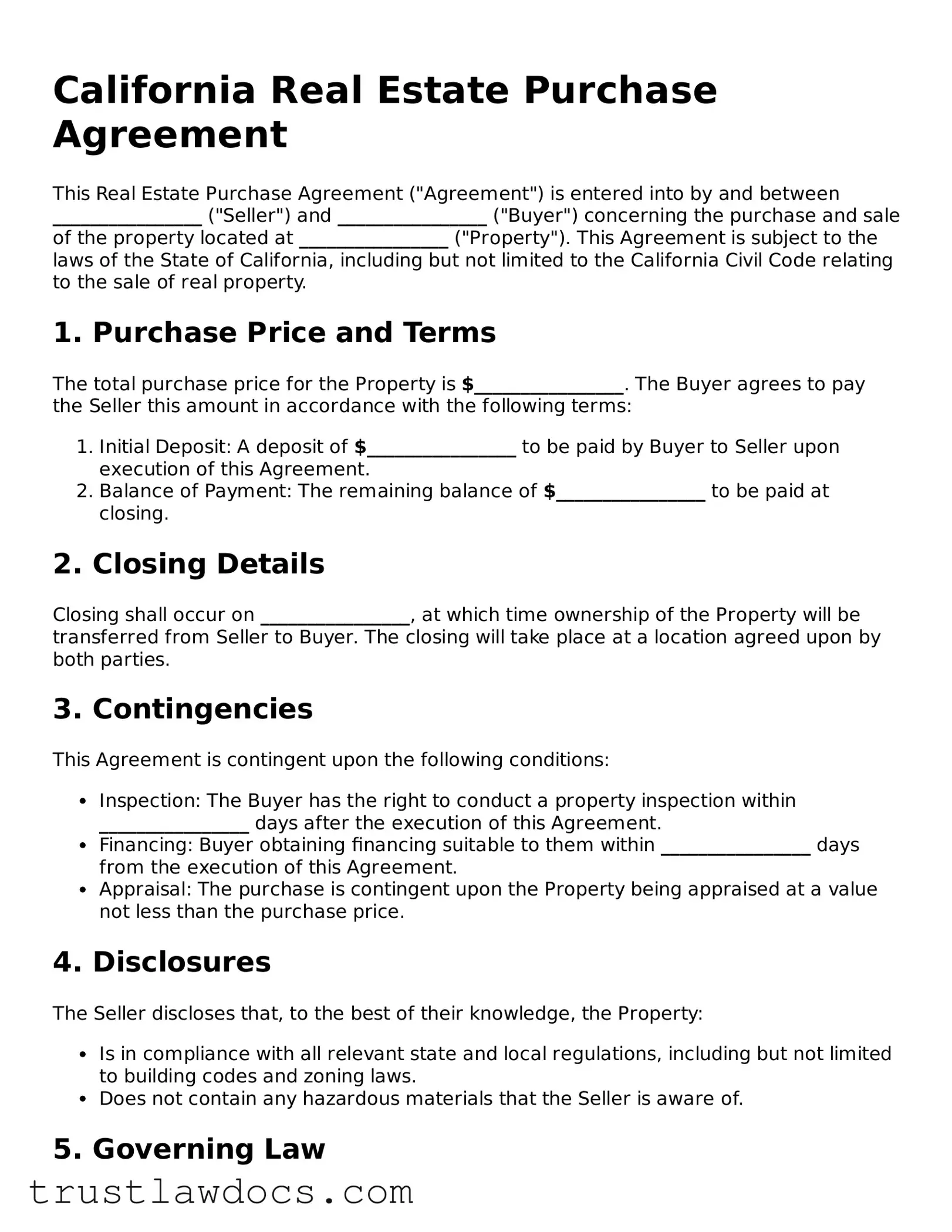What is a California Real Estate Purchase Agreement form?
A California Real Estate Purchase Agreement form is a legally-binding document used when someone is buying or selling property in California. This form outlines the terms of the deal, including the sale price, closing date, and any conditions that need to be met before the deal is finalized.
Who needs to sign the California Real Estate Purchase Agreement?
The buyer(s) and the seller(s) of the property must sign the California Real Estate Purchase Agreement. If either party has agents representing them, the agents might also sign the agreement, acknowledging their participation in the transaction.
Are there any specific disclosures that need to be attached to the Purchase Agreement in California?
Yes, California law requires certain disclosures to be made during the sale of residential property. These can include the Natural Hazard Disclosure Statement, Lead-Based Paint Disclosure, and others relevant to the specific property being sold. These disclosures provide important information to the buyer and are a mandatory part of the real estate transaction process.
What happens if either the buyer or seller backs out of the agreement?
If the buyer or seller backs out of the agreement without a justified reason outlined in the contract (such as not meeting a contingency), they could face legal and financial consequences. The specifics depend on the terms of the agreement, including any penalties or the forfeiture of the deposit.
How is the purchase price determined in the agreement?
The purchase price is usually determined through negotiations between the buyer and the seller prior to finalizing the California Real Estate Purchase Agreement. The agreed-upon amount is then clearly stated in the contract.
Is it necessary to have a real estate lawyer review the California Real Estate Purchase Agreement?
While it's not legally required to have a lawyer review your California Real Estate Purchase Agreement, it's highly recommended. A real estate lawyer can provide valuable insights, ensure the agreement complies with all state laws, and help navigate any complex legal issues that may arise.
What are the consequences of not fulfilling the terms of the Purchase Agreement?
Not fulfilling the terms of the Purchase Agreement can lead to a breach of contract, resulting in legal action. The offending party may be required to pay damages, complete the terms of the sale, or face other penalties as determined by a court.
